Many will remember the kidnapping of J. Paul Getty III in July of 1973. Media coverage was extensive both mainstream and tabloid given that J. Paul Getty was, at the time, the richest man in the world. As if the story wasn’t sufficiently sensational and shocking, adding fuel to the fire was Getty’s initial refusal to pay the $17 million ransom demand followed by the kidnappers cutting off Paul’s ear and lock of hair and mailing it to a newspaper. The kidnapping coverage was the height of media frenzy.

Much like the Getty kidnapping itself, the world has followed with bated breath the final month leading up to the release of ALL THE MONEY IN THE WORLD given the last minute replacement of Kevin Spacey with Christopher Plummer as J. Paul Getty. And by last minute, I do mean last minute given that reshoots took place over Thanksgiving weekend at multiple European locations. At first blush, one might think that reshooting “some scenes” is not that challenging or impossible to pull off, but on seeing the film, “miraculous” is the first word that comes to mind given the vast amount of screen time afforded Plummer; and not only alone, but in scenes with multiple other actors. In short, this was an extensive reshoot and there are few directors, and actors, whom I believe are equal to the task but for Ridley Scott and Christopher Plummer. And on screening the film, one wonders why anyone but Plummer was ever cast as J. Paul Getty. He is flawless.
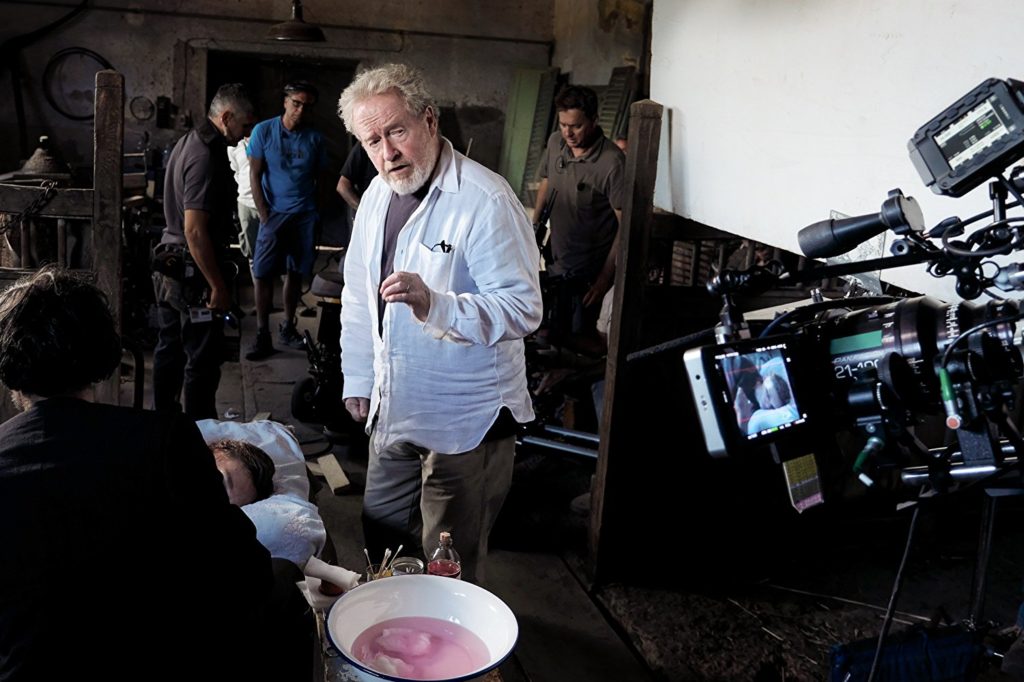
Having said that, however, ALL THE MONEY IN THE WORLD is less than what I have come to expect from Ridley Scott. Surprising (given his last-minute casting) and not surprising (given his level of excellence) is that Christopher Plummer is one of the best, if not best, elements of the film. He is the very embodiment of the perceived persona of J. Paul Getty. But what really makes the performance memorable are the scenes set in the 1960’s between Plummer and young Charlie Shotwell who plays Getty’s grandson Paul at age 7. Plummer and Shotwell truly resonate as a grandfather and grandson and you can feel the old man’s love for this favorite grandchild. Kudos to scribe David Scarpa with the dialogue and the story construct in this regard as it sets the stage like a trail of breadcrumbs for what is to come in the future.
Scarpa’s script is solid in its design and thematics as is the relative timeline of true events interspersed with the fictional. At its core is a commentary on money and what money does to an individual, be they a “have” or a “have not”. It’s an intriguing approach and theme and fortunately, fits the Getty scenario perfectly. Disappointing, however, is the actual production of that script as the film misses the edginess and tension of what I am sure was a page-turner, not to mention the actual grip the story had on the world in 1973. Given lessons in his youth from the old man (those breadcrumbs mentioned above), we know that Paul knows his grandfather will not pay the demanded ransom. And that proves to be a double-edged sword as we never really feel any sense of urgency or tension in the film or with the kidnapping sequence itself. It’s all very matter of fact that this is just part of the life of being a Getty.

Joining Christopher Plummer as a highlight in the film is the very stoic and relatively unemotional Mark Wahlberg as Fletcher Chase. The calm he imbues within Chase is perfection for someone who survives making deals and embodies the idea of never let them see you sweat. . . something which comes to play in a beautifully lensed and performed climactic nighttime scene involving Plummer. Fully immersed in character as Getty, he is profusely sweating as his perceived world is crumbling around him. Not only a beautiful visual metaphor but it speaks volumes as to Getty the man. While we get some tidbits on Chase’s background, it would have been nice to see the character fleshed out a bit more. A confrontation in the third act between Getty and Chase as played by Plummer and Wahlberg is electrifying and one of the high points of the film.
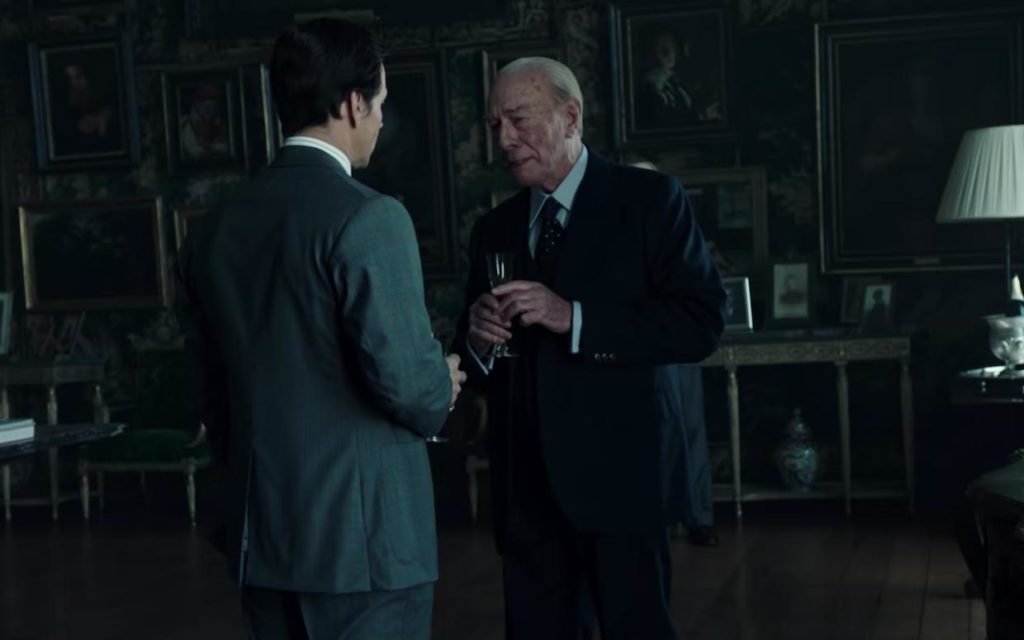
As Abigail “Gail” Harris Getty, Michelle Williams leaves much to be desired. The performance is fine but the character and Williams’ accent are grating. And again, we never feel any real urgency of the situation at hand, which explains in part from a cinematic standpoint why Paul was held captive for so long; another shortcoming as we never get a true sense of the actual length of captivity which was in reality almost five months to the day. Annoying is an overdose of profile and 3/4 profile close-ups of Williams. Not only does that particular angle never really allow one to connect with the character, look her in the eyes so to speak, but it separates her from the film as a whole and focuses on her as an outsider to the Getty world – although she dresses and acts like she has money – creating an ambiguity in her role as a concerned mother.
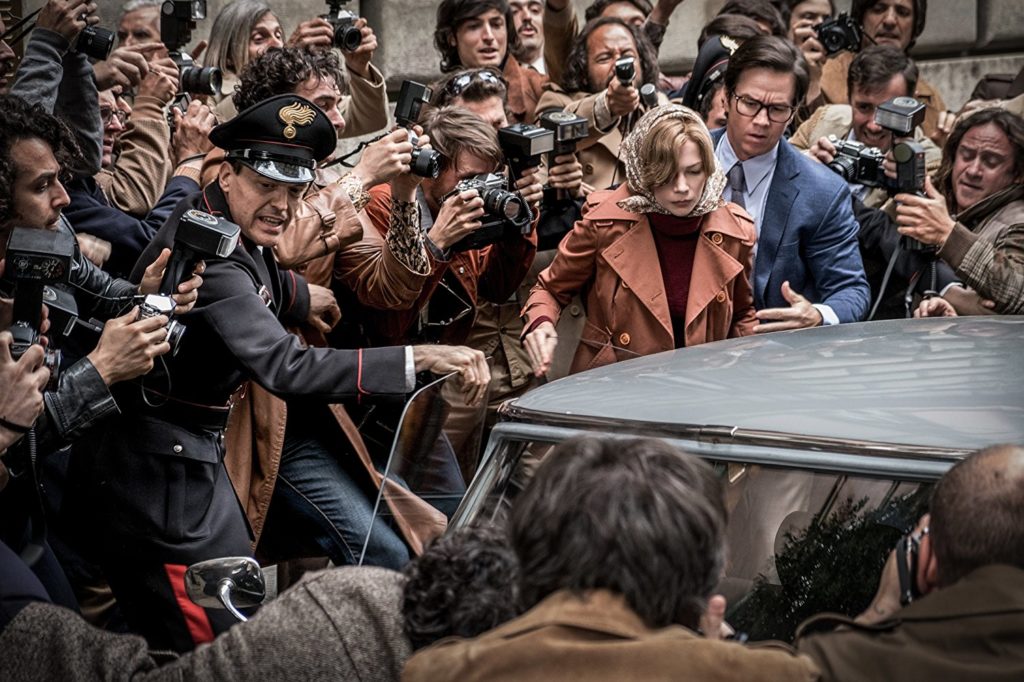
Charlie Plummer does a more than admirable job as Paul. His facial expressiveness, and particularly his eyes, is fabulous. We feel his fear. It is palpable. Resonant. Hand-in-hand with Charlie Plummer’s performance is that of Romain Duris as Cinquanta, one of Paul’s captors and the one with whom Paul interacts daily. We become as invested in him as we do in Paul. His unexplained disappearance between wafting bedsheets on a clothesline in the third act after Paul is reunited with his mother and Chase is actually a letdown. While not the film’s focus, Cinquanta is a character with whom we connect and have a vested interest.
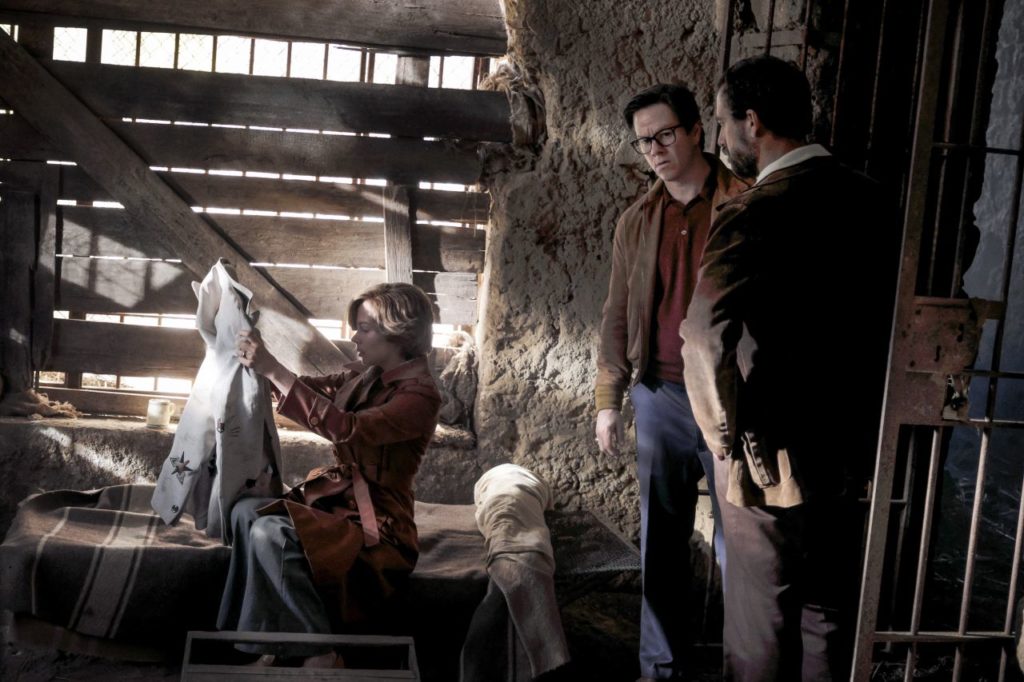
Some applause for Janty Yates’ costuming, particularly with Paul’s jacket, the fabric for which bears the print of the Getty logo which was first shown in a 1940’s/50’s flashback on Getty’s super oil tanker. Nice touch. Yates’ work also adds much to the character of Gail with the Oleg Cassini inspired suited looks of the day. Similarly, Arthur Max’s production design steeps us in the cloistered world of J. Paul Getty while providing stunning contrast with the openness and almost familial world of young Paul’s kidnappers. There is an intimacy within the latter that is almost enviable when compared to that of old man Getty.
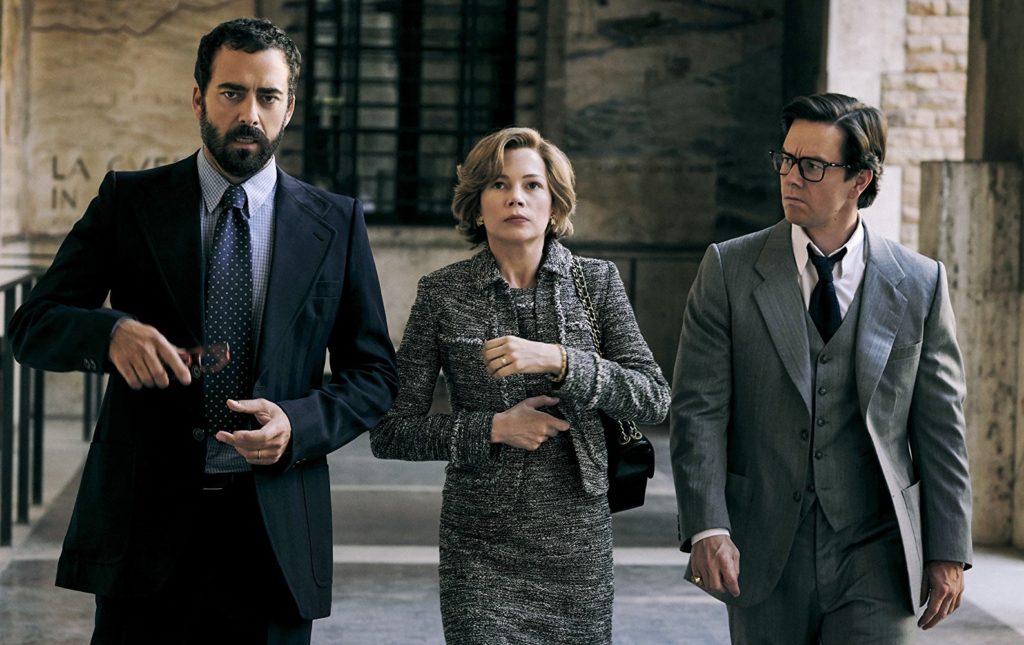
Visually the film starts out captivating our attention with period perfect black & white crane shots, slowly zooming down to eye level of 16-year old Paul wandering through Rome and then slowly introducing color. The black and white visually pops while setting the metaphoric stage for the black & white of J. Paul Getty’s world. Interesting is that Scott and cinematographer Dariusz Wolski went with a rather flat visual after that. There’s no real richness of color or visuals which is disappointing given the locations. However, lighting design is telling as we move through the darker, more shadowed, dark-wooded world of Getty exploring metaphoric secrets through fringed negative space versus the bright, light, natural, and surprisingly open world of the kidnappers.
The problem with ALL THE MONEY IN THE WORLD, however, comes with the editing. Although serviceable, we essentially have three stories, possibly a fourth, but the connective tissue is missing which would make it all feel cohesive with pacing and fluidity failing to ratchet up any tension. We have a kidnapping of the grandson whose family literally does have all the money in the world, but we never feel the urgency or seriousness of the situation.
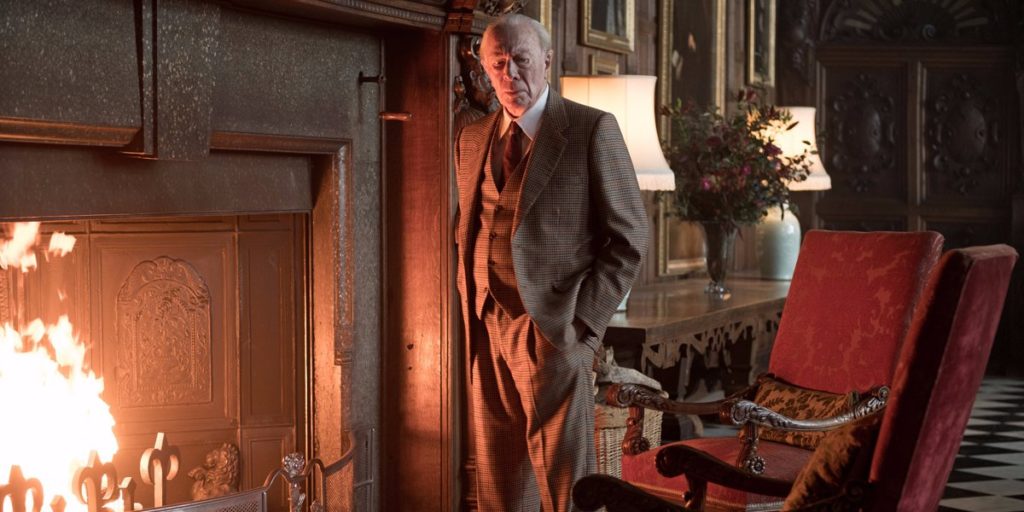
Daniel Pemberton’s score adds a nice undertow to the story at hand.
But again, the reason to see ALL THE MONEY IN THE WORLD is Christopher Plummer. He is superb and at his Oscar-caliber best while Charlie Plummer tears your heart out with tears in his eyes and fear in every facial muscle. No relation between the two, but with these performances it’s clear that Charlie is definitely taking a page or two from Christopher’s playbook.
Directed by Ridley Scott
Written by David Scarpa based on a chapter in the book by John Pearson.
Cast: Christopher Plummer, Michelle Williams, Charlie Plummer, Romain Duris
by debbie elias, 12/15/2017











